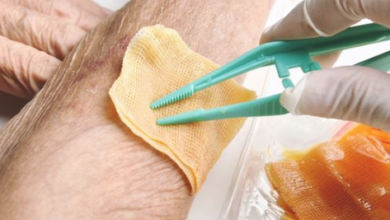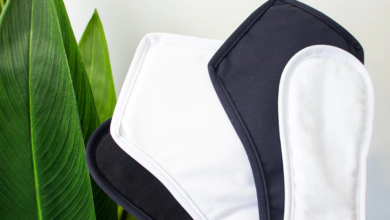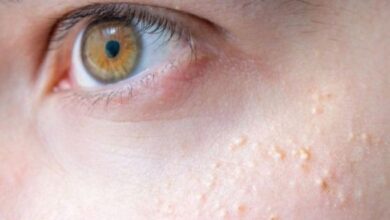How Medical Uniforms Care Can Prevent Infections Properly?

Medical uniforms, such as scrubs, lab coats, and protective gowns, are crucial in infection control within healthcare settings. These garments are designed to act as a barrier between healthcare professionals and potentially harmful pathogens, minimizing the transfer of microorganisms and protecting both the wearer and patients. However, if mens cargo scrubs are not properly cared for, they can become reservoirs for bacteria, viruses, and other pathogens, posing a significant risk of cross-contamination and infection transmission.
Direct contact with patients is one of the primary sources of contamination for medical uniforms. Healthcare professionals interact closely with patients, often coming into contact with their skin, bodily fluids, or contaminated surfaces. Pathogens can easily adhere to the fabric of uniforms, especially if there are breaches in the protective barrier, such as small cuts or punctures. Additionally, healthcare workers may inadvertently transfer pathogens from one patient to another if their uniforms are contaminated.
Environmental Contamination:
Exposure to bodily fluids is another factor contributing to the contamination of medical uniforms. Healthcare professionals frequently encounter situations where they may come into contact with blood, saliva, urine, or other potentially infectious materials. These fluids can contaminate the uniform, creating a potential source of infection for both the wearer and others in the healthcare environment.
Environmental contamination within healthcare facilities can also affect the cleanliness of medical outfits. Hospitals and clinics are dynamic environments with high traffic and numerous potential sources of pathogens. Surfaces, equipment, and even the air can be contaminated, and healthcare professionals can unknowingly pick up these pathogens on their uniforms. Uniforms can become breeding grounds for bacteria and viruses without proper care and maintenance, increasing the risk of infection transmission.

To mitigate these risks, meticulous care of medical uniforms is essential. Adhering to specific guidelines for cleaning, handling, and wearing these garments can significantly reduce the risk of cross-contamination and infection transmission.
Cleaning Medical Uniforms:
is a critical step in preventing the spread of infections. Healthcare professionals should follow specific guidelines to ensure effective decontamination. Firstly, removing uniforms before leaving the healthcare facility is crucial to prevent the transfer of pathogens to the outside environment. Uniforms should be promptly placed in designated laundry bags or bins to avoid contamination of personal belongings or other surfaces.
Regular Washing of Medical Uniforms:
is necessary to eliminate pathogens effectively. Appropriate detergents, preferably those with antimicrobial properties, combined with hot water at 60°C (140°F), are recommended to kill most microorganisms. Clear instructions should be provided to healthcare professionals regarding proper washing procedures, including using bleach or other disinfectants if necessary.
Handling and storage of medical uniforms are equally important. After washing, uniforms should be carefully handled to minimize the risk of recontamination. Shaking or tossing uniforms should be avoided, as it can release infectious particles into the air. Instead, uniforms should be gently folded or hung up immediately after drying, also it avoids wrinkles for you to look stylish in your medical scrubs.
Clean uniforms should be stored in a designated area, away from potential sources of contamination. Keeping uniforms in individual lockers or sealed bags is advisable to prevent contact with other items or surfaces. Healthcare facilities should also provide clear guidelines regarding the frequency of uniform changes, ensuring that soiled or visibly contaminated uniforms are only reused with proper cleaning.
Properly Wearing Medical:
Uniforms is crucial to maintain their effectiveness in infection control. Healthcare professionals should ensure that uniforms are worn properly and securely fastened. This includes ensuring that sleeves are appropriate and that gowns or aprons adequately cover the front and back.
Regular Uniform:
Changes are necessary, especially if they become visibly soiled or contaminated during patient care. Healthcare professionals should also be aware of the risk of self-contamination when removing uniforms, following established protocols for removing gloves and other personal protective equipment (PPE) before taking off the uniform.
Proper education and training of healthcare professionals regarding the importance of medical uniform care are essential. Healthcare facilities should provide comprehensive guidelines on uniform care, including washing procedures, handling techniques, and storage recommendations. Ongoing education and reinforcement of these guidelines help ensure that healthcare professionals understand the critical role they play in preventing the transmission of infections.
Conclusion:
Medical uniforms are a vital barrier in infection control, but they can become reservoirs for pathogens if not properly cared for. Direct contact with patients, exposure to bodily fluids. And environmental contamination within healthcare facilities contribute to uniform contamination. By following guidelines for cleaning, handling, and wearing medical outfits, healthcare professionals can minimize the risk of cross-contamination and prevent the spread of infections.
Ensuring a safer healthcare environment for the healthcare providers and patients they serve. Healthcare facilities should prioritize the provision of clear instructions, adequate laundry facilities. And necessary supplies to ensure that proper uniform care is feasible for their staff. By prioritizing medical outfit care, healthcare providers can enhance infection control measures. And contribute to a safer healthcare environment.





